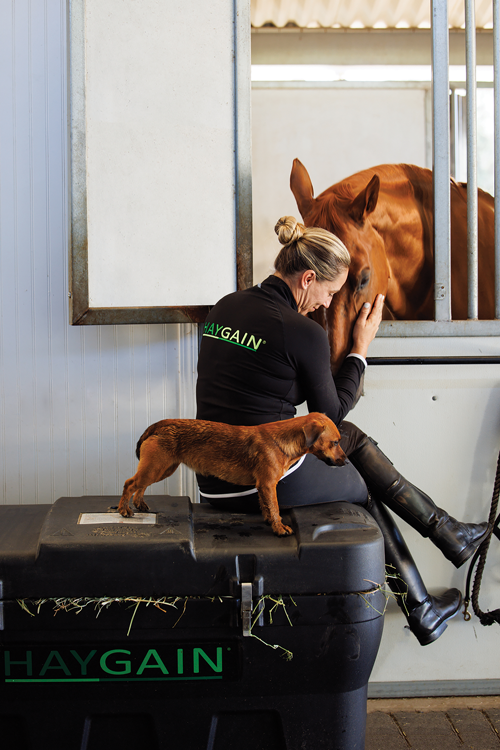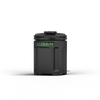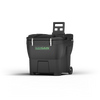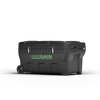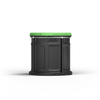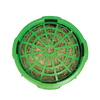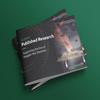Haygain HG 600
Haygain HG 600
Haygain HG 600
Haygain HG 600
- Do you have a question? We’re here to help. Contact us today!
WHY BUY A HAYGAIN HAY STEAMER
-
Proven to help the respiratory system
-
Capacity for 20-31 lbs forage
-
Advanced patented technology
Haygain HG 600
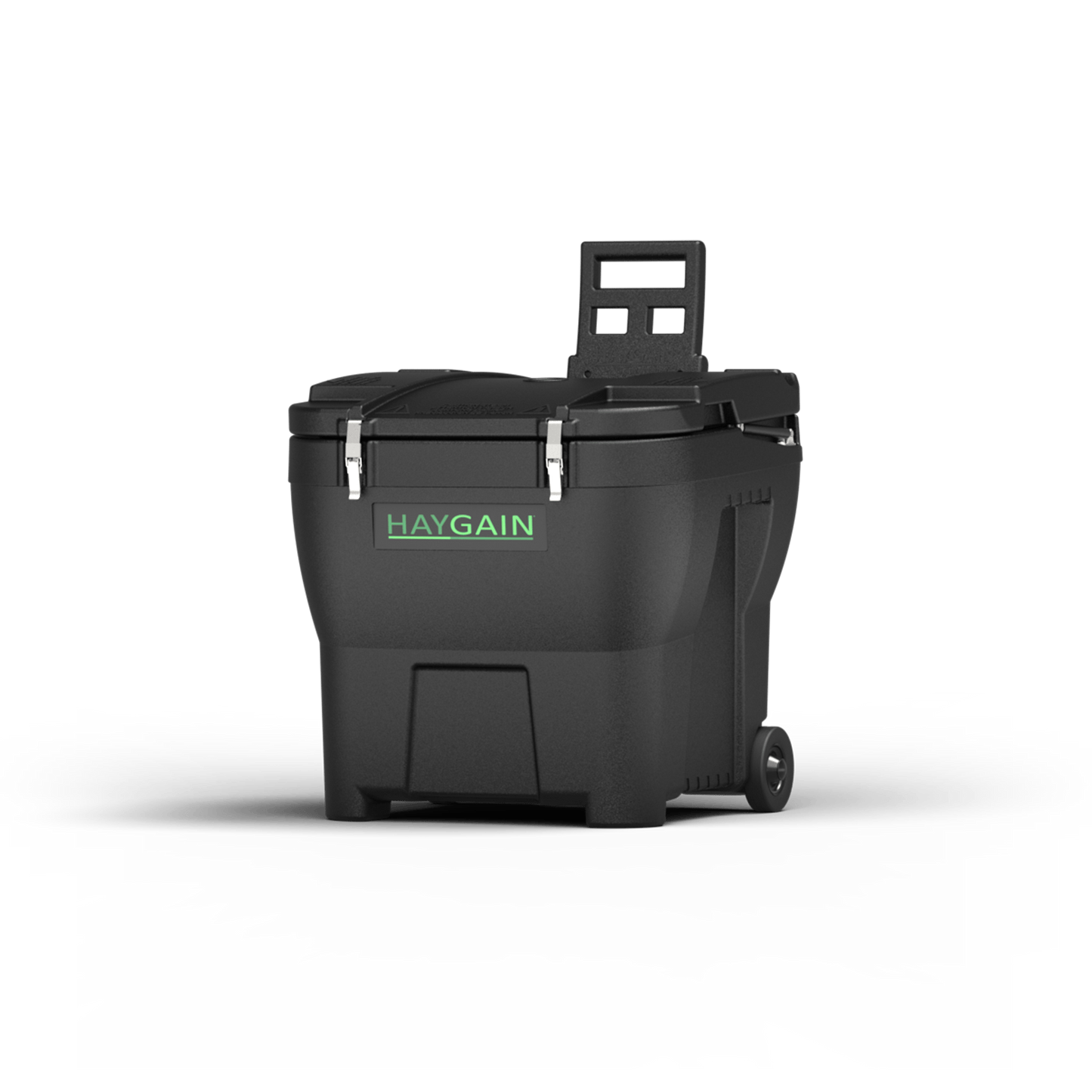

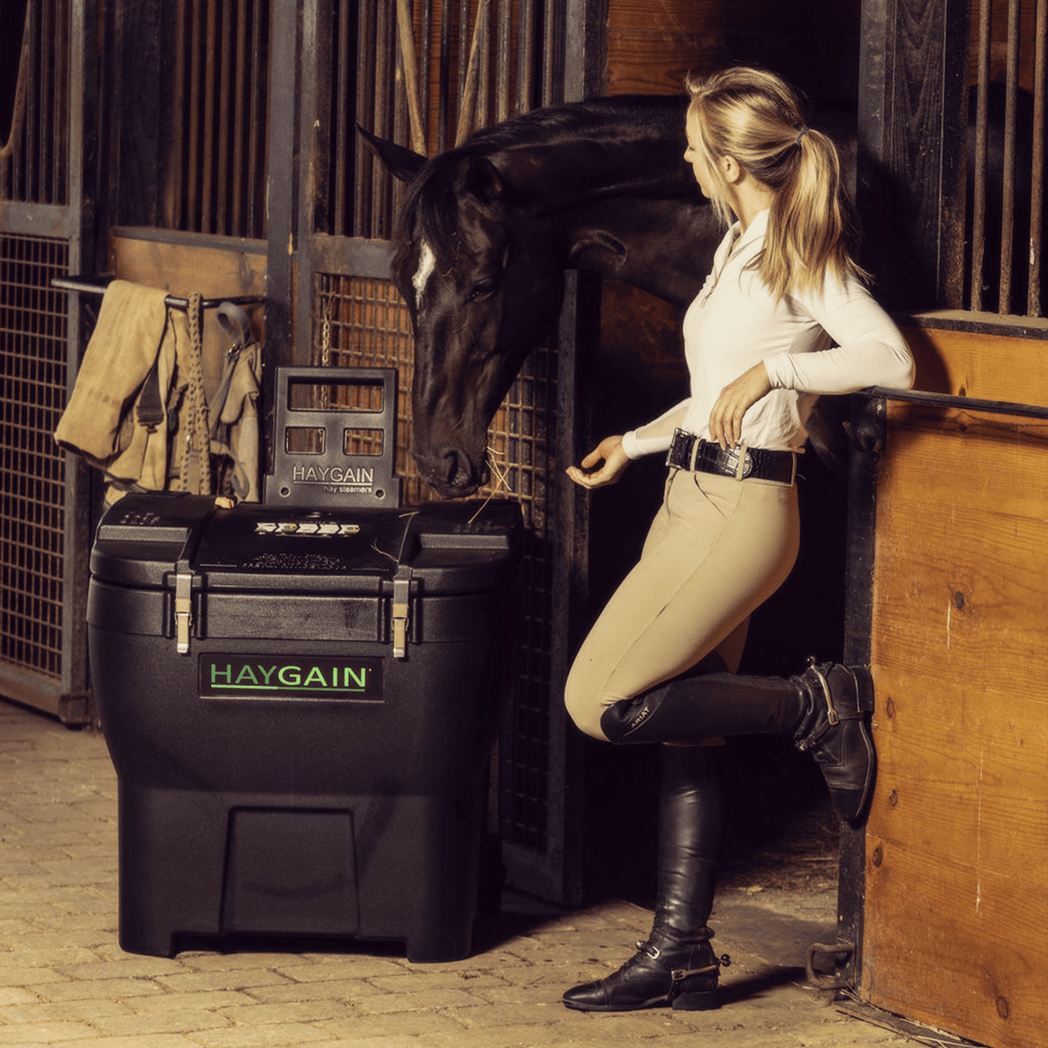
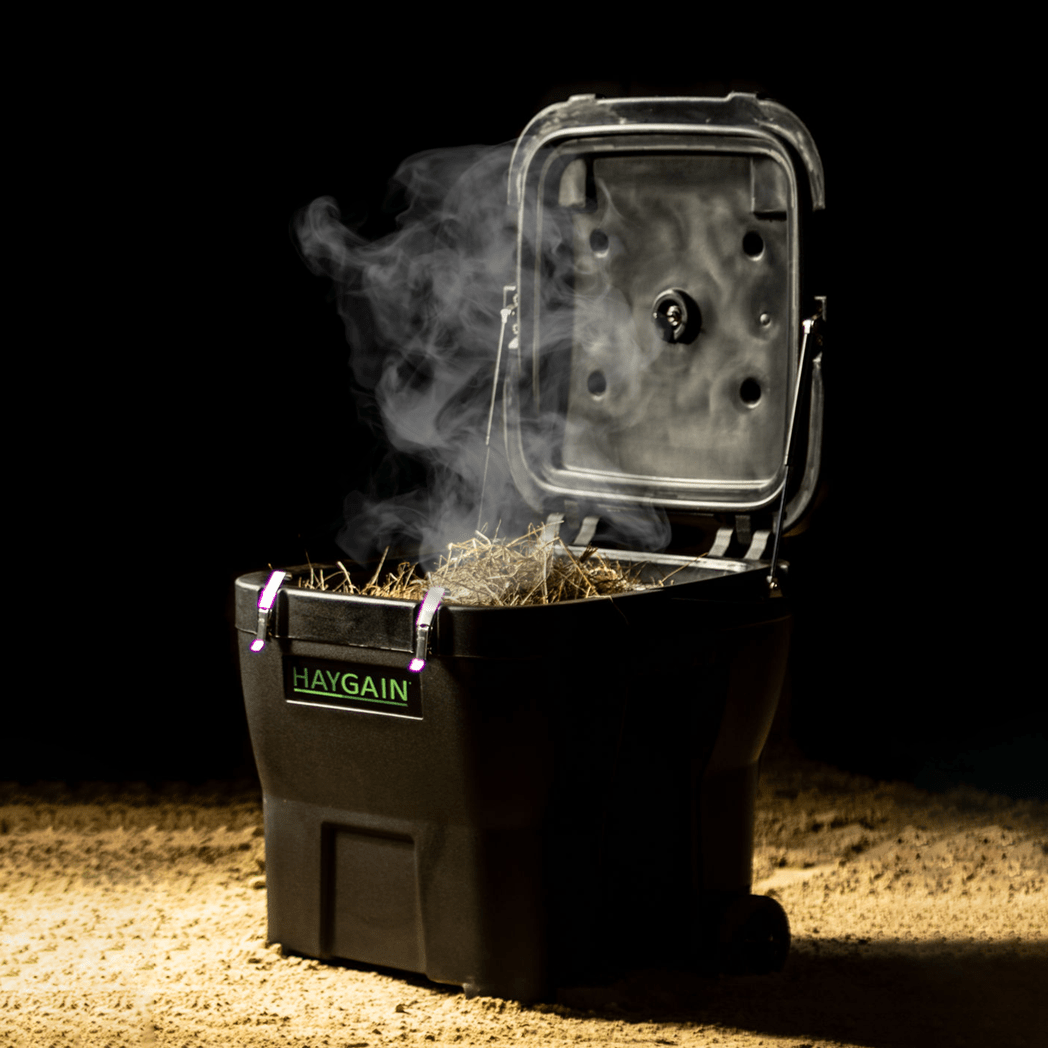
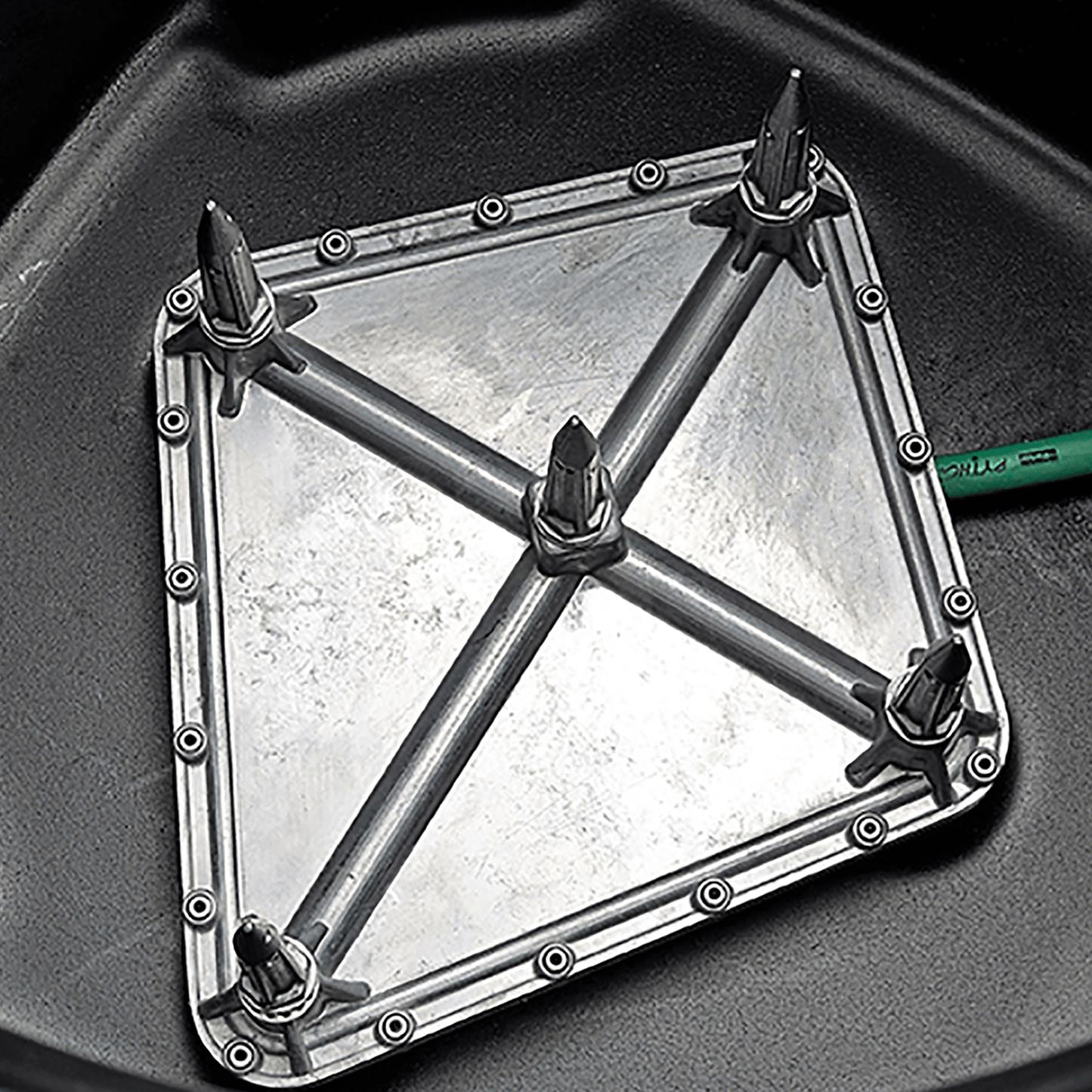

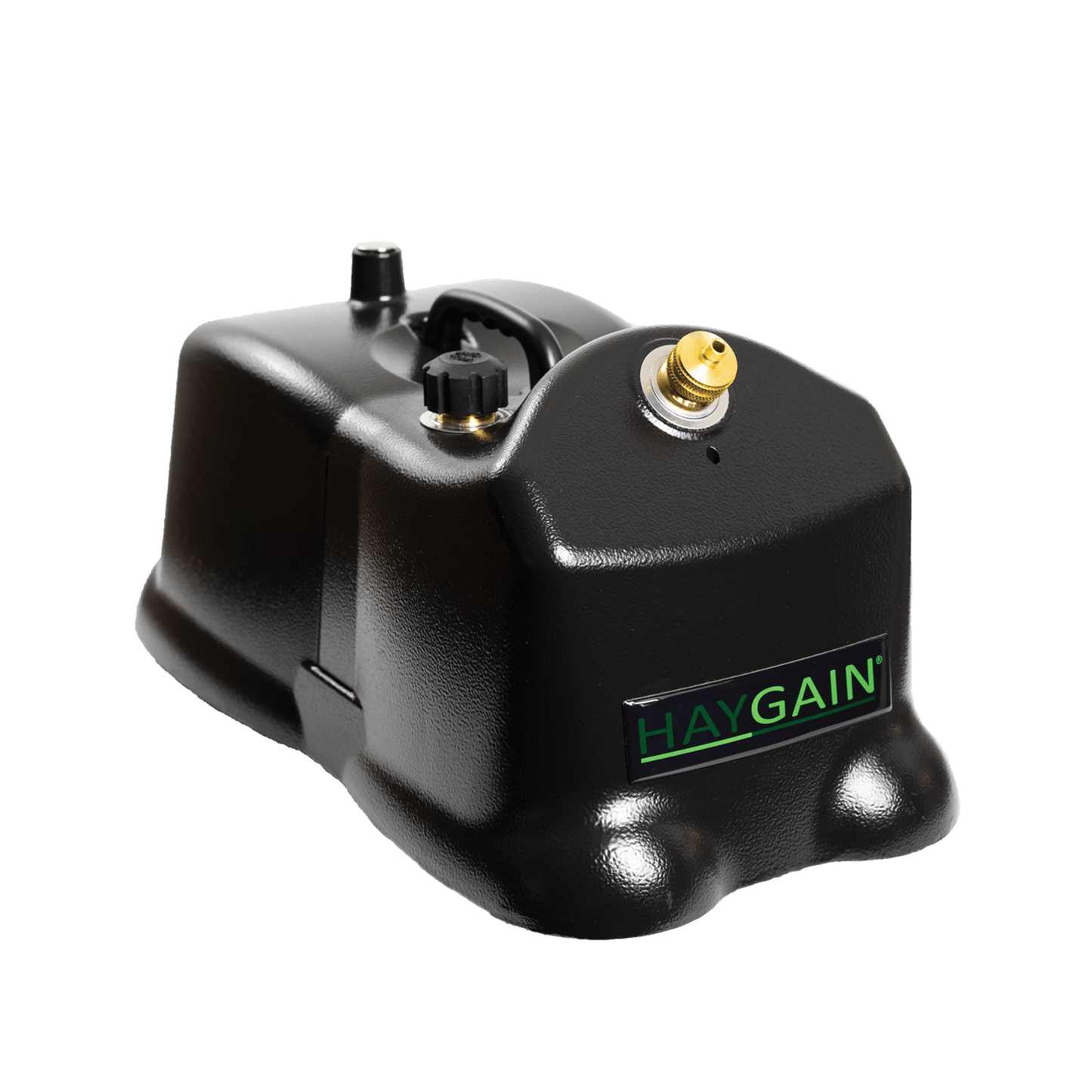
BENEFITS
Haygain High Temperature Hay Steaming supports respiratory, digestive and overall horse health. It is the only scientifically proven method for significantly reducing respirable irritants and allergens commonly found in forage.
Haygain’s patented steaming technology adds moisture to hay, aiding digestion and hydration. Haygain Steaming preserves hay’s nutrients and Steamed Hay’s proven appetite appeal helps even picky eaters get what they need from their most important food source.
PRODUCT DESCRIPTION
Haygain’s patented spike manifold system injects high-temperature steam evenly throughout forage in a double-skinned, thermally sealed chest. The steaming process attains and maintains temperatures over 212ºF, which is required to kill mould and bacteria.
The HG 600 is our most popular model. Easily portable and with 20-31 lbs forage capacity, the HG 600 is ideal for home, show and travel use.
Due to regional variations, your boiler may differ from those shown in our marketing materials.
SPECIFICATIONS
Hay Capacity: 9-14kg (20-31lbs) of forage in a haynet or loose wedges
Steaming Cycle: Approximately 60 minutes
Steam Generator: 1.5kW steam generator 4 QTS capacity (3.78 liters)
Chest Specifications: Double-skinned and thermally insulated
Additional Features: Easy open lid, wheels and handle
Product Dimensions: L 805mm x W 776mm x H 751mm
Weight: 41kg (90lbs) combined weight of hay container and steam generator
DOWNLOADS
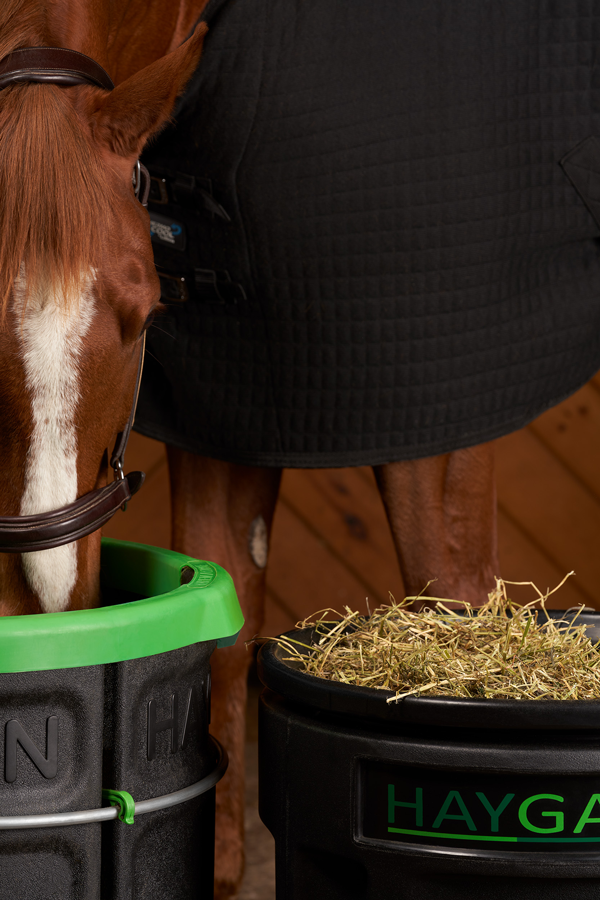
ABOUT HAYGAIN
Horses were meant to live in the wild.
They don't.
Our practical, science-backed equipment addresses the equine health challenges that come with modern equine management.
As herd animals, horses have physical, psychological and behavioral needs that are difficult to fulfil in domesticated life.
Equine veterinarians, nutrition and behavioural experts, scientists and -- above all -- true horse people contribute to the design, manufacture and
evolution of Haygain's products.
We are proud to help you help your horse. And to help horses live healthy, happy lives.
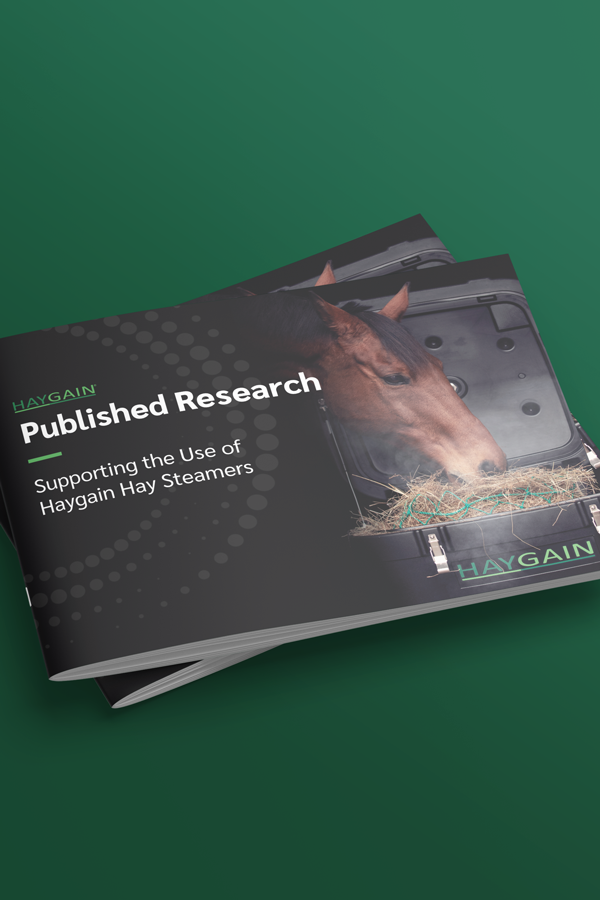
THE SCIENCE
Haygain Hay Steamers offer a powerful solution for equine health and nutrition. Effective in reducing airborne respirable dust by up to 99%, eliminating mold, fungal spores, bacteria, and yeast that trigger asthma and chronic respiratory inflammation.
Haygain Hay Steamers also reduce the risk of Inflammatory Airway Disease by 65%, all while preserving hay's nutrition and digestibility.
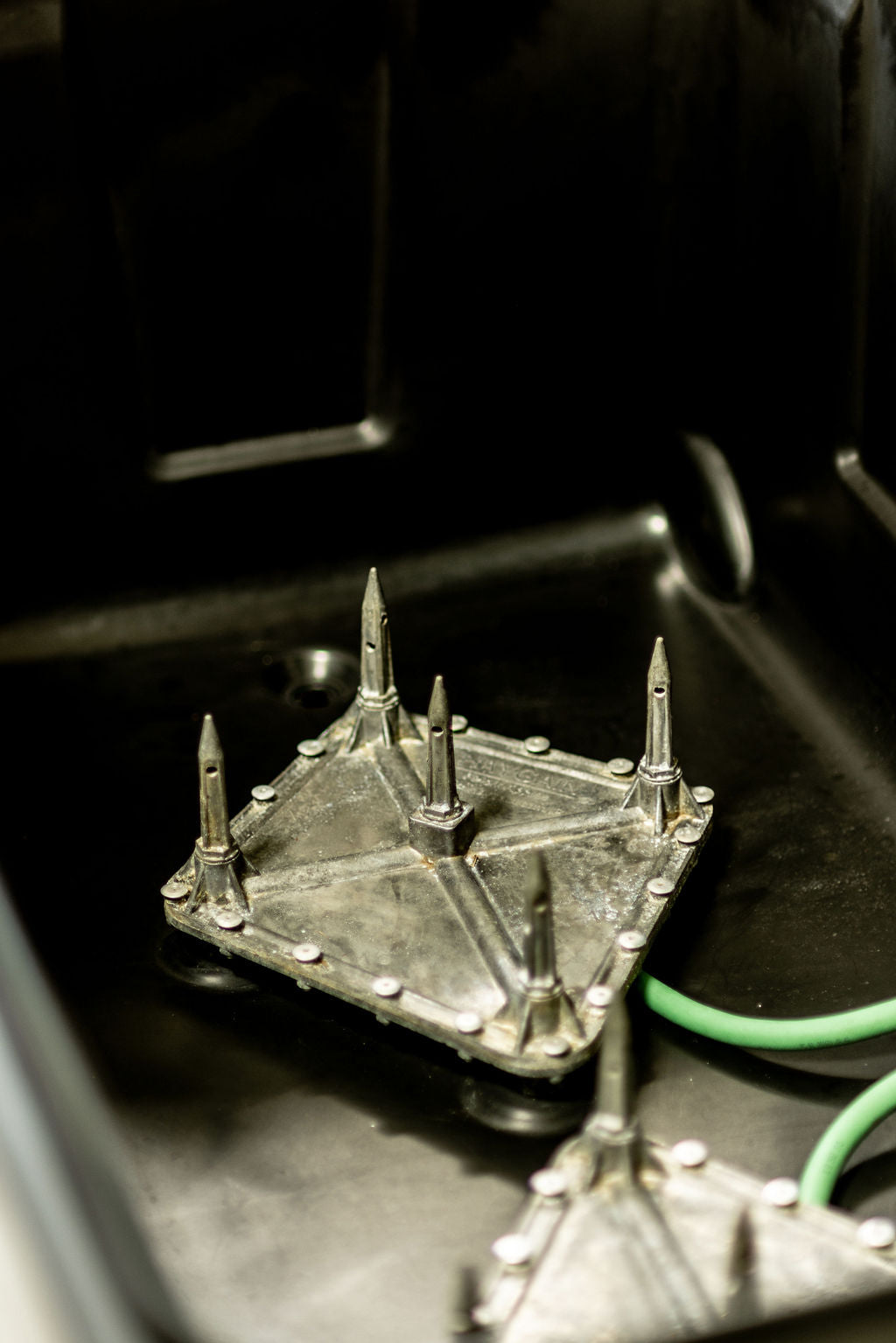
THE TECHNOLOGY
Haygain Hay Steamers are engineered for maximum efficiency in hay steaming. With the capability to reach temperatures exceeding 212ºF, they effectively eradicate mold, fungi, yeast, and bacteria, while also reducing respirable dust particles by up to 99%.
The Patented Manifold design, featuring a deltoid configuration, ensures uniform distribution of high-temperature steam throughout the entire hay bale, steaming it from the inside out. This innovative approach, combined with the use of aluminum materials for the manifold, elevates the chest's temperature, enhancing the unit's overall efficiency and effectiveness.
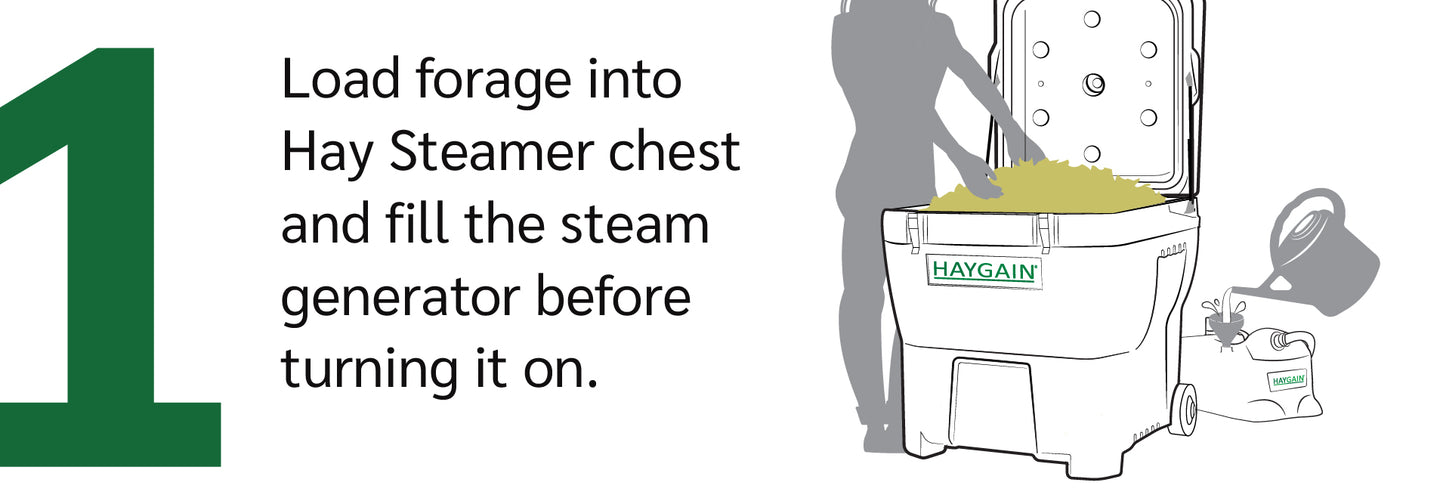
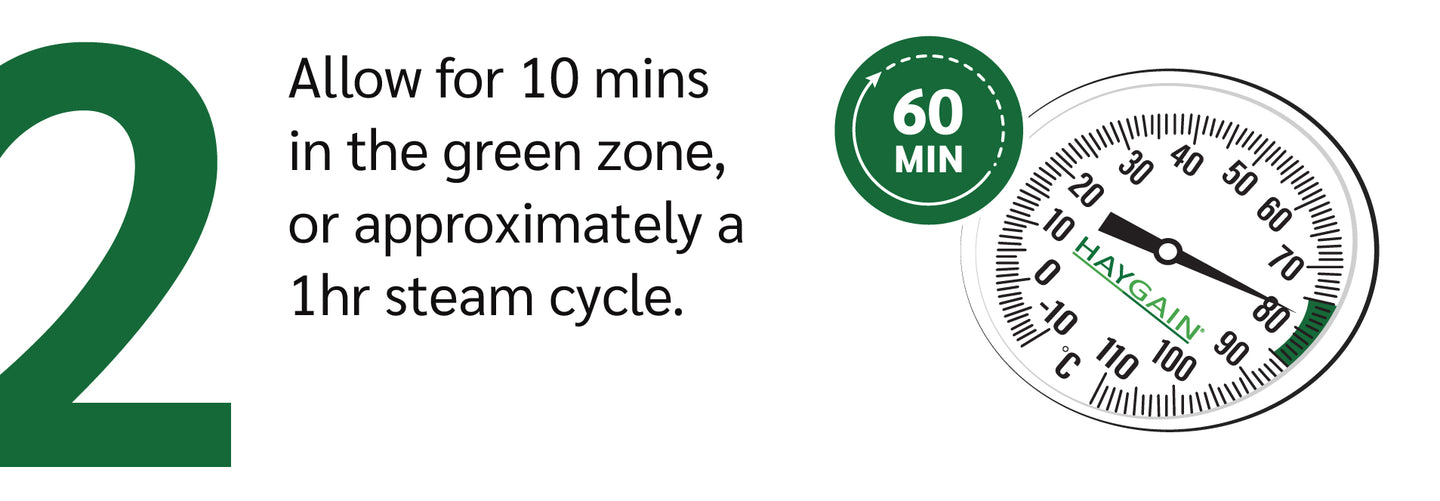
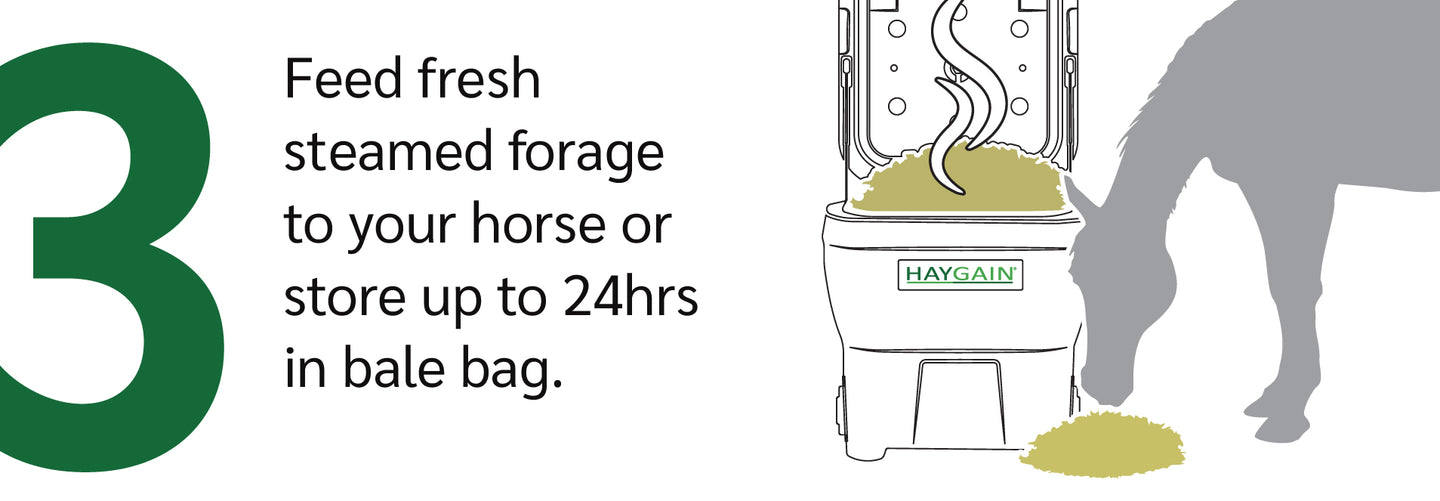
FREQUENTLY ASKED QUESTION
My horse does not cough and appears healthy – do I need a Haygain?
My horse does not cough and appears healthy – do I need a Haygain?
Exposure to respirable particles such as mould spores and bacteria can induce allergic responses and develop a hypersensitivity reaction in the horse. Even the best quality hays are high in respirable particles. These particles form the “dust” that you cannot see (they are less than 5 µm in size), and have a 50% chance of being inhaled deep into the lungs, causing conditions on the equine asthma spectrum. Minimizing the amount of “dust” your horse is subjected to will help to prevent respiratory problems.
My horse has COPD/RAO/Heaves can I feed Haygain steamed hay?
My horse has COPD/RAO/Heaves can I feed Haygain steamed hay?
Yes, absolutely! Respiratory diseases can be effectively managed by minimising respirable dust, mould spores and bacteria in the horse’s environment, particularly those in the horse’s breathing zone. Since hay contains high concentrations of these and the horse’s nose is in the hay while it is eating, it is vitally important to reduce this source of dust by steaming the hay.
Will my horse stop coughing?
Will my horse stop coughing?
Results are often reported within days of using the Haygain but do depend on the individual horse, the cause of the cough and other environmental factors. For example, if you change to feeding Haygain steamed hay but the horse remains on a dusty straw bed, while you will probably see some improvement it will be compromised by the other source of respirable dust. Equally, if you make changes to your horse’s feeding and management regime but the horses stabled either side, sharing the same air space have dry hay and straw bed then again the improvement may not be as marked.
What is the difference between soaking and steaming?
What is the difference between soaking and steaming?
Soaking hay will dampen the spores down and make them swell so they are less likely to be inhaled. With steaming the combination of the heat and the moisture actually kills the spores, eliminating the allergenic respirable particles.
What makes Haygain stand apart from other hay steamers
What makes Haygain stand apart from other hay steamers
Haygain is the only scientifically proven system to kill mould spores including Aspergillus, as well as bacteria and dust mites. The nutritional value and goodness are maintained with improved palatability.
How much does Haygain cost to run?
How much does Haygain cost to run?
Electricity use is minimal and water usage is substantially less than that required to soak hay. The HG 2000 uses two, 1.5 kW steam generators, or "boilers," so 3 kW of electricity per hour. The HG 600 and HG ONE each use one 1.5 kW boiler. Calculate the electricity cost of each steaming cycle by multiplying your utility company's per-hour kilowat rate by the kilowat usage of your steamer model. For comparison, a washing machine typically requires 1.7 kWs.
How much water will be used?
How much water will be used?
The hay will absorb and therefore hydrate bringing it back towards its original moisture content, approximately 15+% of its original weight but the hay is neither soggy or heavy. The HG-PB (HG2000/HG600) will actually use about 4 ½ liters of water per cycle, some will be absorbed by the hay, some will be released as steam when you open the lid and some will be the residue of on average a tea-cup amount of water (condensed steam) which remains from each steam cycle and drains out of the drain hole in the bottom of the hay chest.
Does the outside of the container get hot?
Does the outside of the container get hot?
All of the Haygain range are made from composite materials with highly efficient thermal properties so although the inside of the container can reach over 100 degrees C the outside is just warm to touch. Therefore, Haygain hay steamers are environmentally friendly and energy saving.
Can I steam haylage?
Can I steam haylage?
Absolutely! Haygain will improve the hygienic quality of any forage. Scientific studies have also shown it will increase the shelf life of haylage by up to 4 days.
Once steamed, how long before you feed the hay and how long does it last?
Once steamed, how long before you feed the hay and how long does it last?
The hay is very hot when you first take it out and should be handled with care but it cools very quickly once in the air and can be fed immediately. It is best fed while it is warm and steamy and it would appear most horses prefer it like this but otherwise should be used within 24 hours.
What does steamed hay look and feel like?
What does steamed hay look and feel like?
Steamed hay is totally different to soaked hay and is damp rather than wet. The treatment is not about how wet it is but how hot it is. You will find the hay in the middle of the bale/ hay net will be quite dry. This is because when the steam comes out of the spikes it is at it’s hottest. As the steam travels through the hay and meets the plastic lid it will cool slightly, condense to water and drop back on to the hay. This results in the outside of the hay being wetter than the inside.
Does it matter if the hay dries out?
Does it matter if the hay dries out?
It is best fed while it is warm, straight out of the Haygain but you will find it cools and dries rapidly as soon as the air gets to it. This has no effect on the hygienic quality or palatability. We recommend feeding the hay within 24 hours to prevent contamination from environmental sources.
There is sometimes a little bit of water coming out of the drain hole in the chest during the steaming cycle. What do you recommend?
There is sometimes a little bit of water coming out of the drain hole in the chest during the steaming cycle. What do you recommend?
That is normal – it is usually condensation that collects under the lid during steaming. We recommend using a sturdy kitchen or garden tray under the drain hole(s) to catch this water.
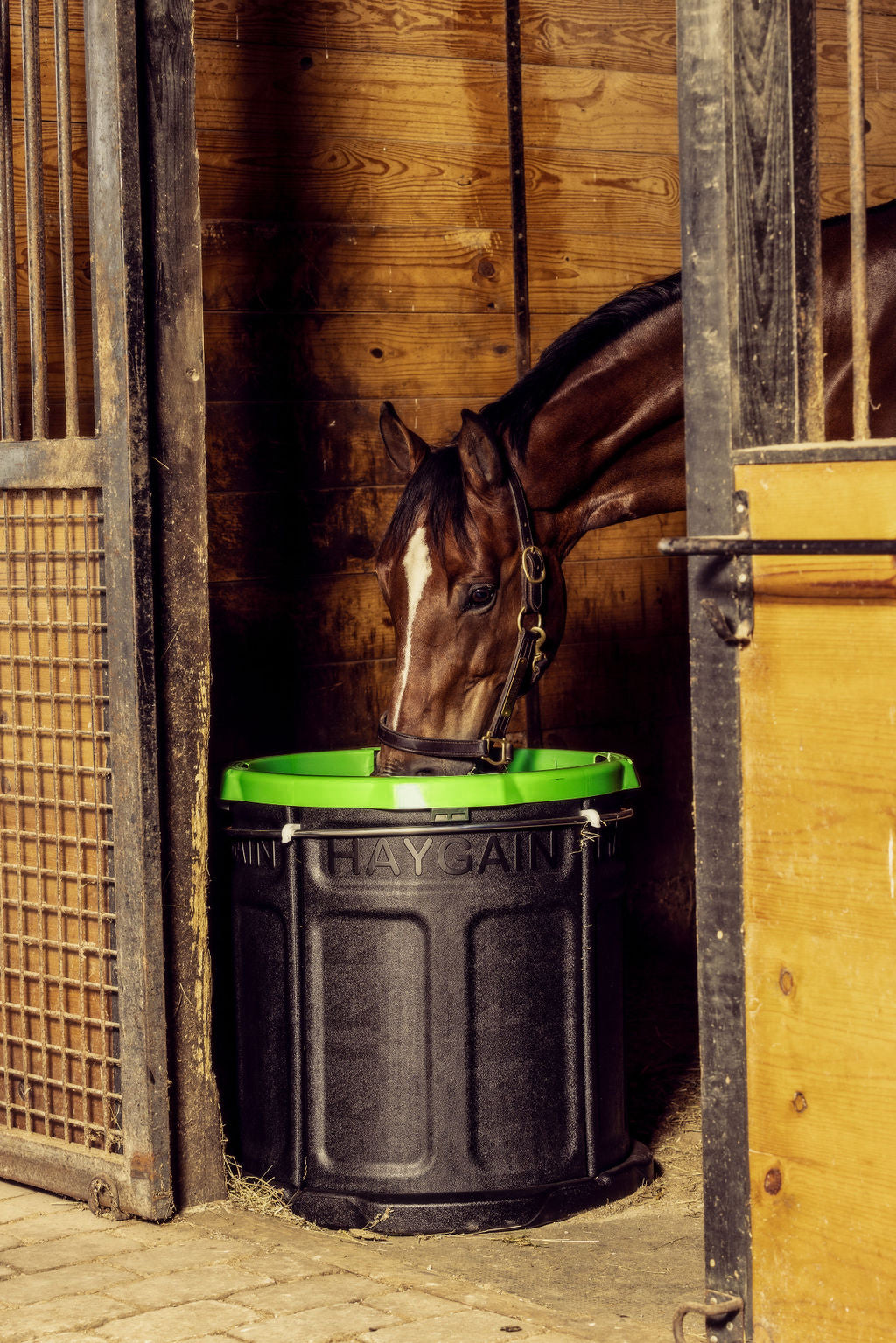
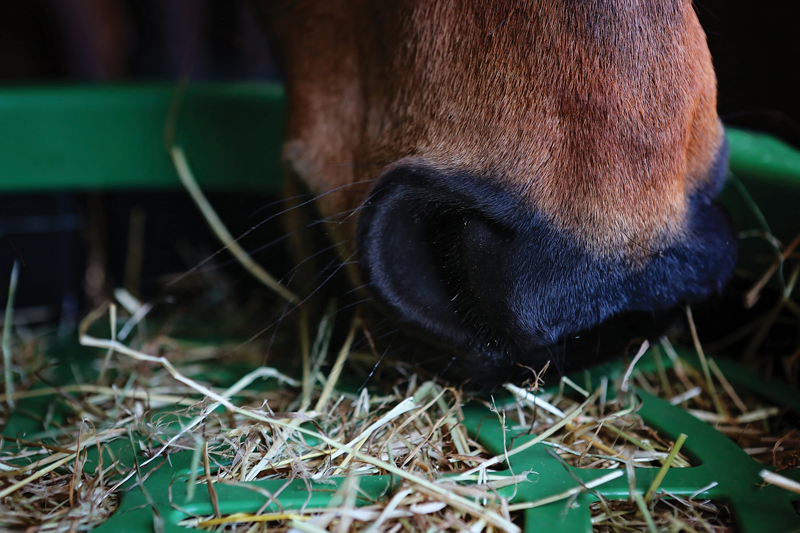
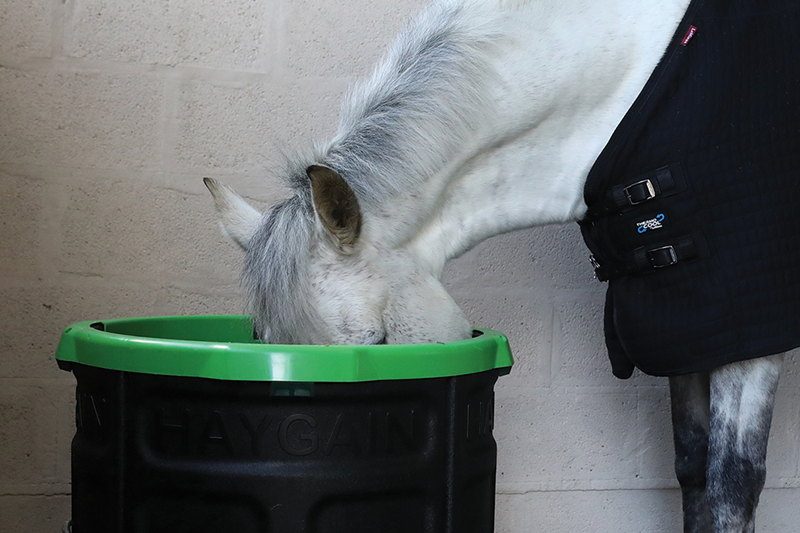
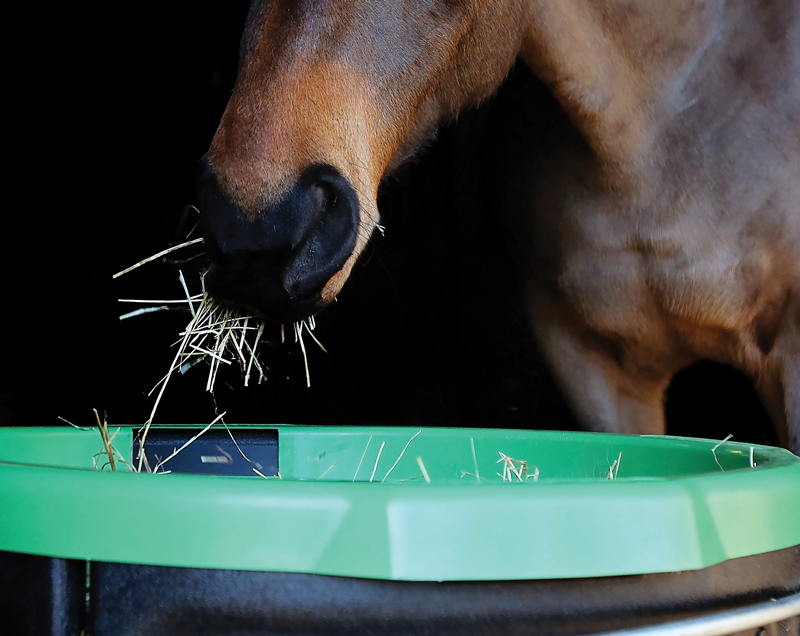
The Forager Slow Feeder
LET YOUR HORSE EAT THE WAY NATURE INTENDED
Extended Meal Times
The regulator grid allows your horse to eat slowly, in small bites over several hours - as they would while grazing. Support healthy digestion and keep your horse happily occupied.
Lowered Head Position
Allows drainage of particles from the upper respiratory tract and supports the natural alignment of the head, neck and spine.
Less Forage Waste
Sturdy cylinder contains hay to prevent waste and contamination. The Forager can be secured to the wall and base filled with sand for extra stability.
